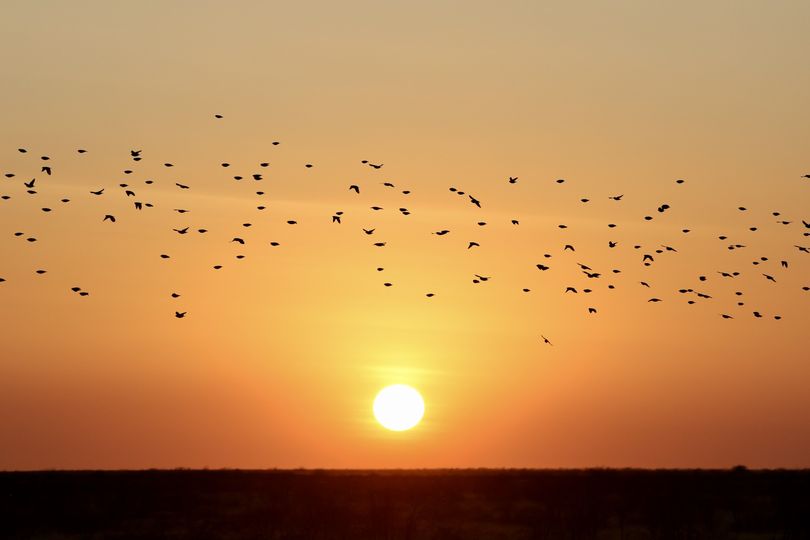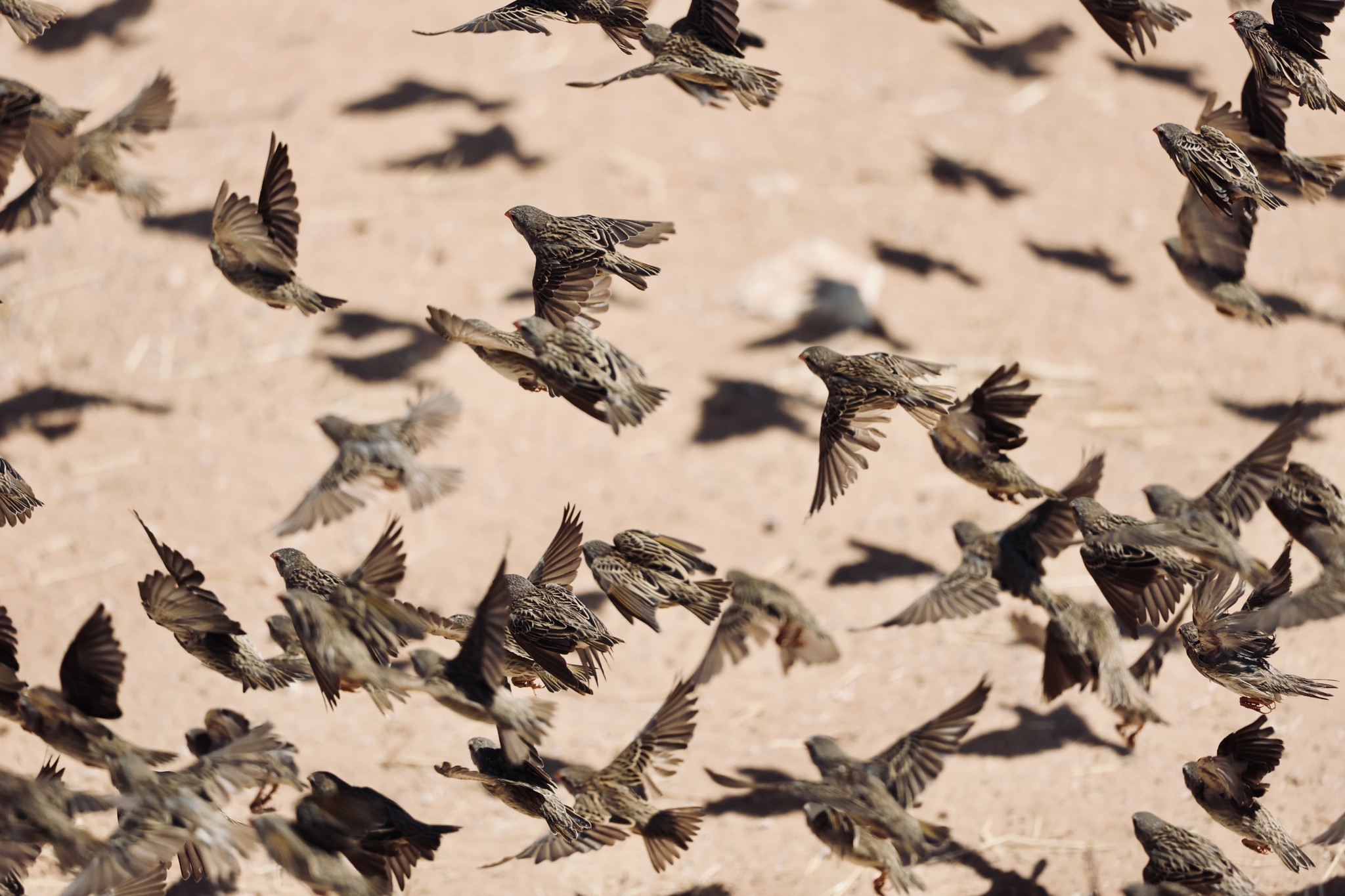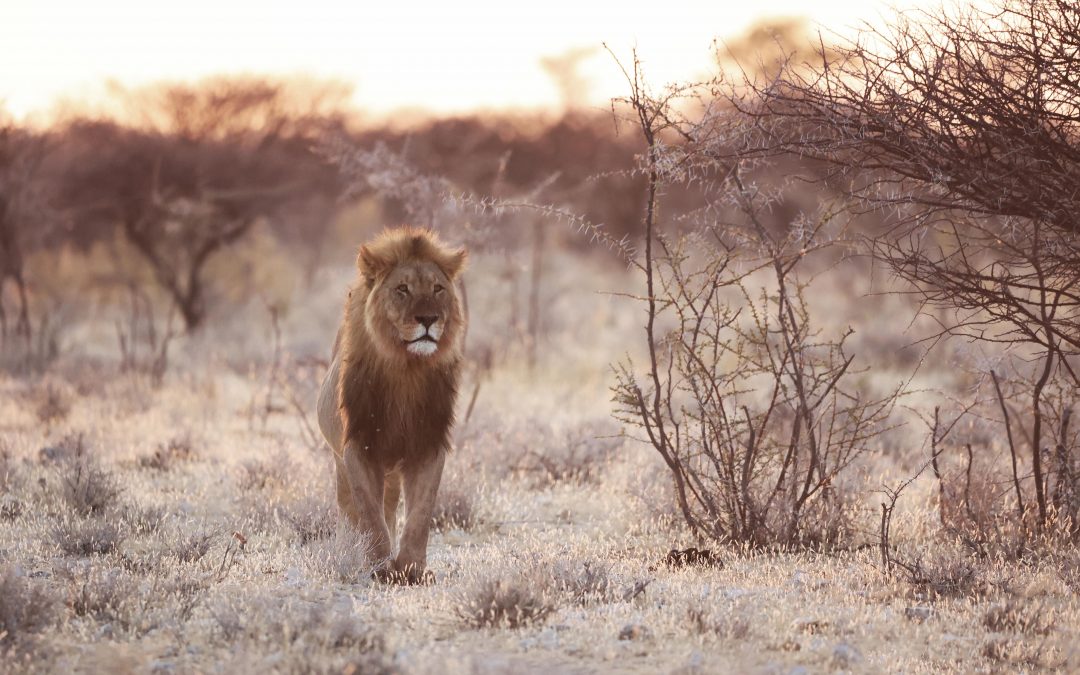
The Great White Place (of lions)
It is 2:30 AM and we are wide awake. Sitting alone next to Okaukeujo camp’s floodlit waterhole, we cradle mugs of scalding hot tea while trying to stay warm on the cold bench at this bewitching hour. We were awaken by the night-splitting roars of a pride of lions calling to each other from very close by. While the rest of the campsite snores happily, we have been shivering out here for the past hour, scanning the rock-strewn landscape around the waterhole for any sign of the cats. Just as we decide to call it quits, a tell-tale flicking of black ears catches our eyes. Two lionesses have been lying not 30 metres from us all this time in perfect camouflage! Then four more, including two beautiful males, soundlessly step into the light and join them. We watch them in quiet excitement until one of the lionesses suddenly trots away with the rest following in tow. As we reflect on this amazing encounter, we realise this pride takes our lion tally to 38 over the past week alone. Not that anyone is counting of course.
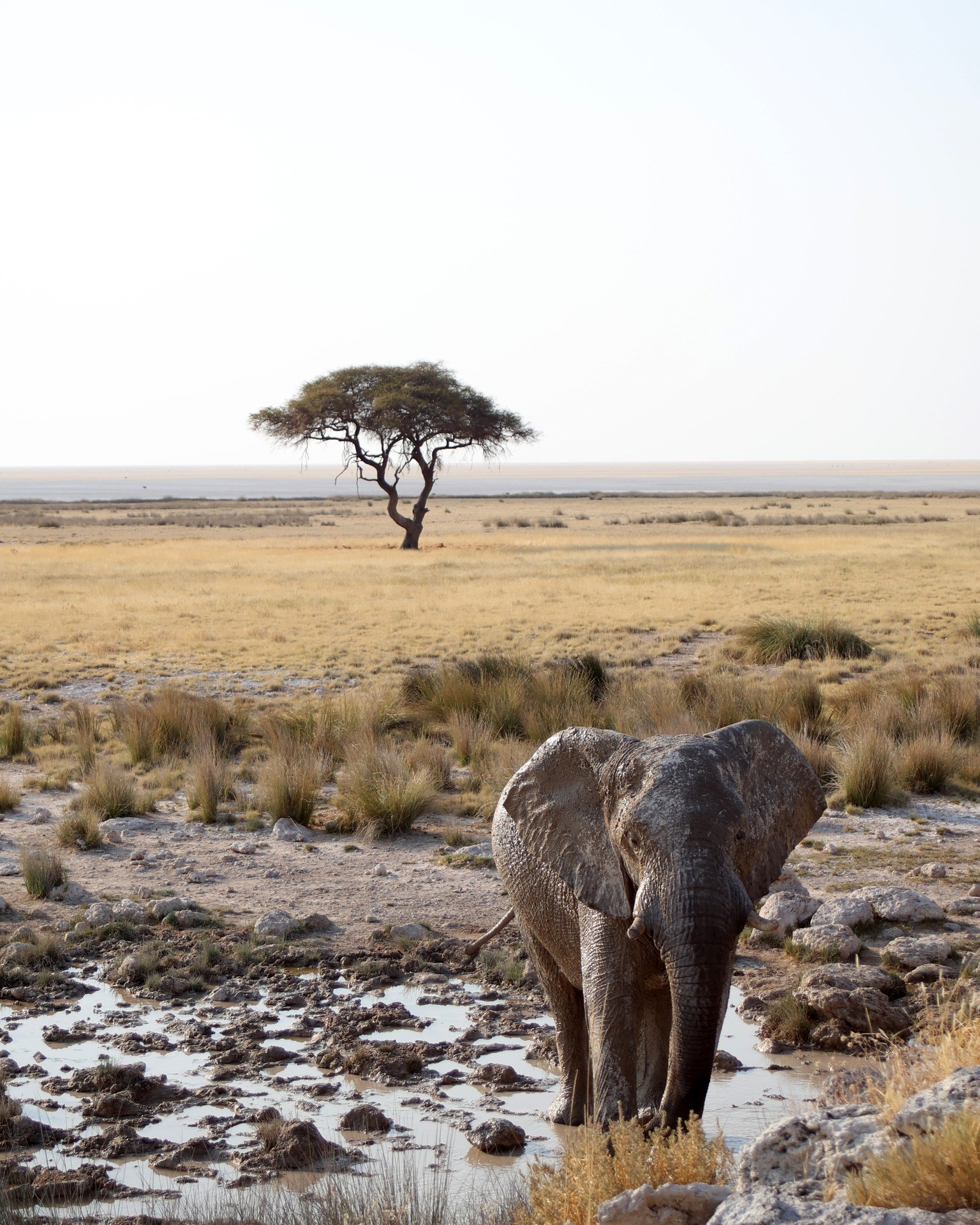
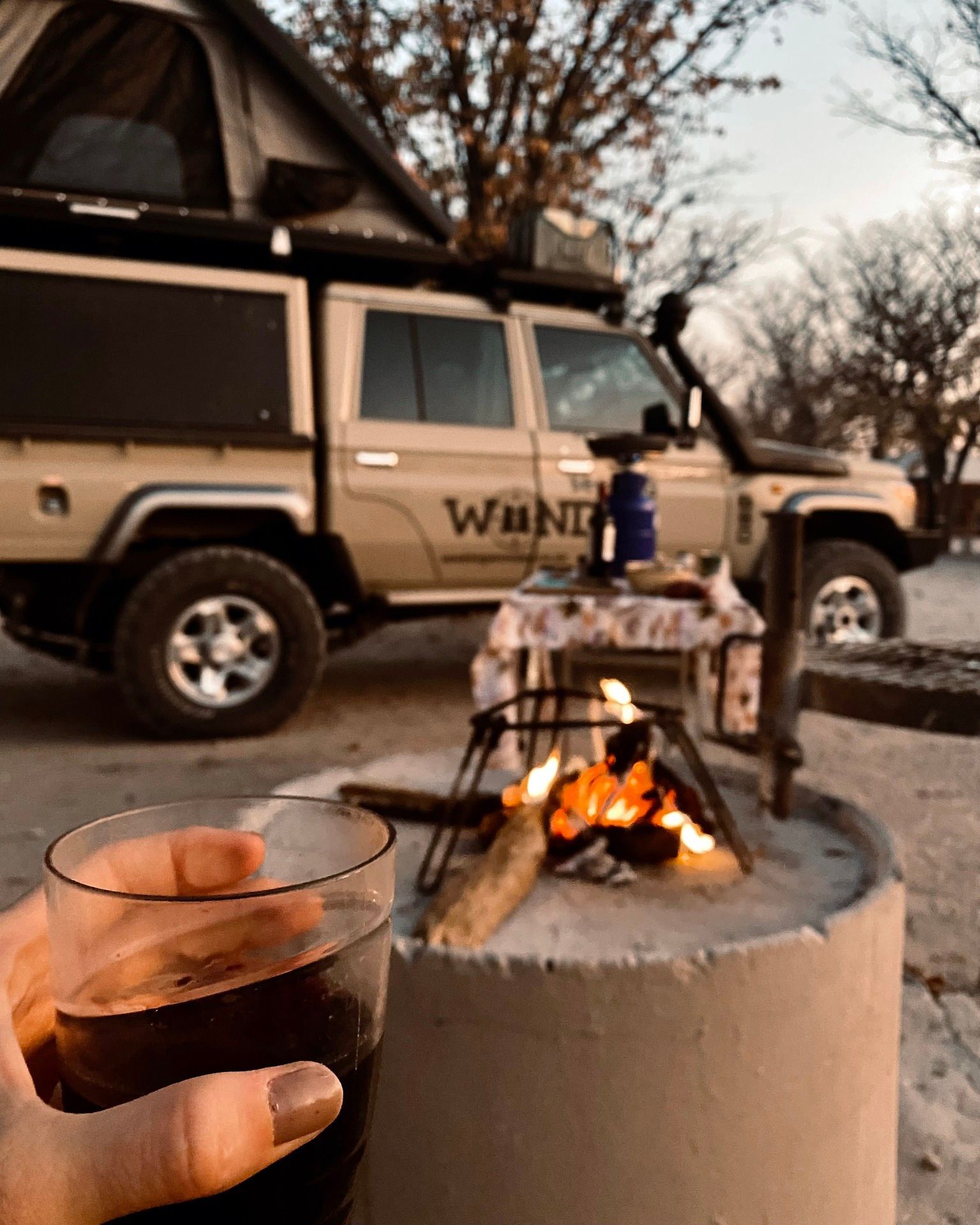
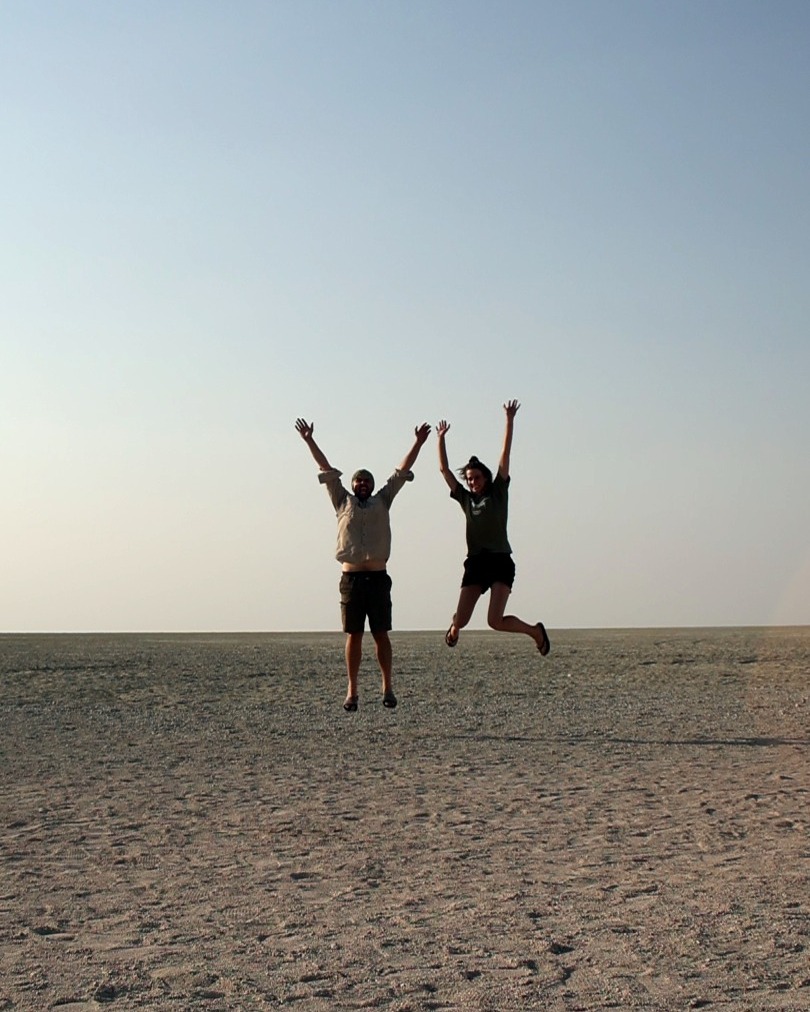
Etosha National Park is one of the original reasons we decided to get into Baloo and start this amazing road trip lifestyle. Located in the Northern reaches of Namibia, it is a very far drive for most South Africans. After taking Baloo for a spa day (aka a general service) in Tsumeb, we headed to Etosha for an exciting eight days, spending some time in most of the camps. One of the oldest game reserves in Africa, it thankfully had a name change from imaginatively being called Game Reserve 2 in the early 1900s to Etosha, meaning the great white place. Fitting also, because it sure is great and, well, very chalky white.
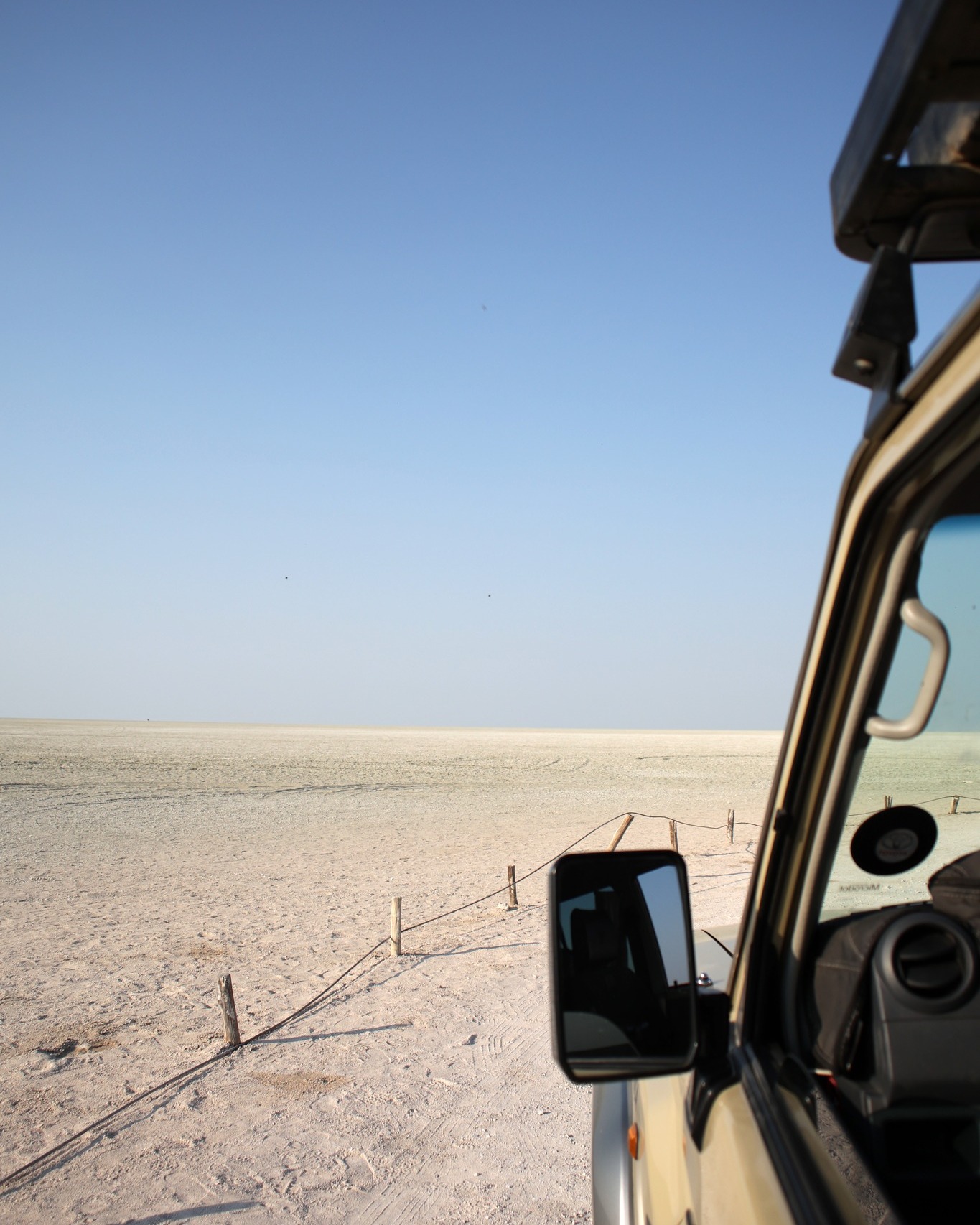
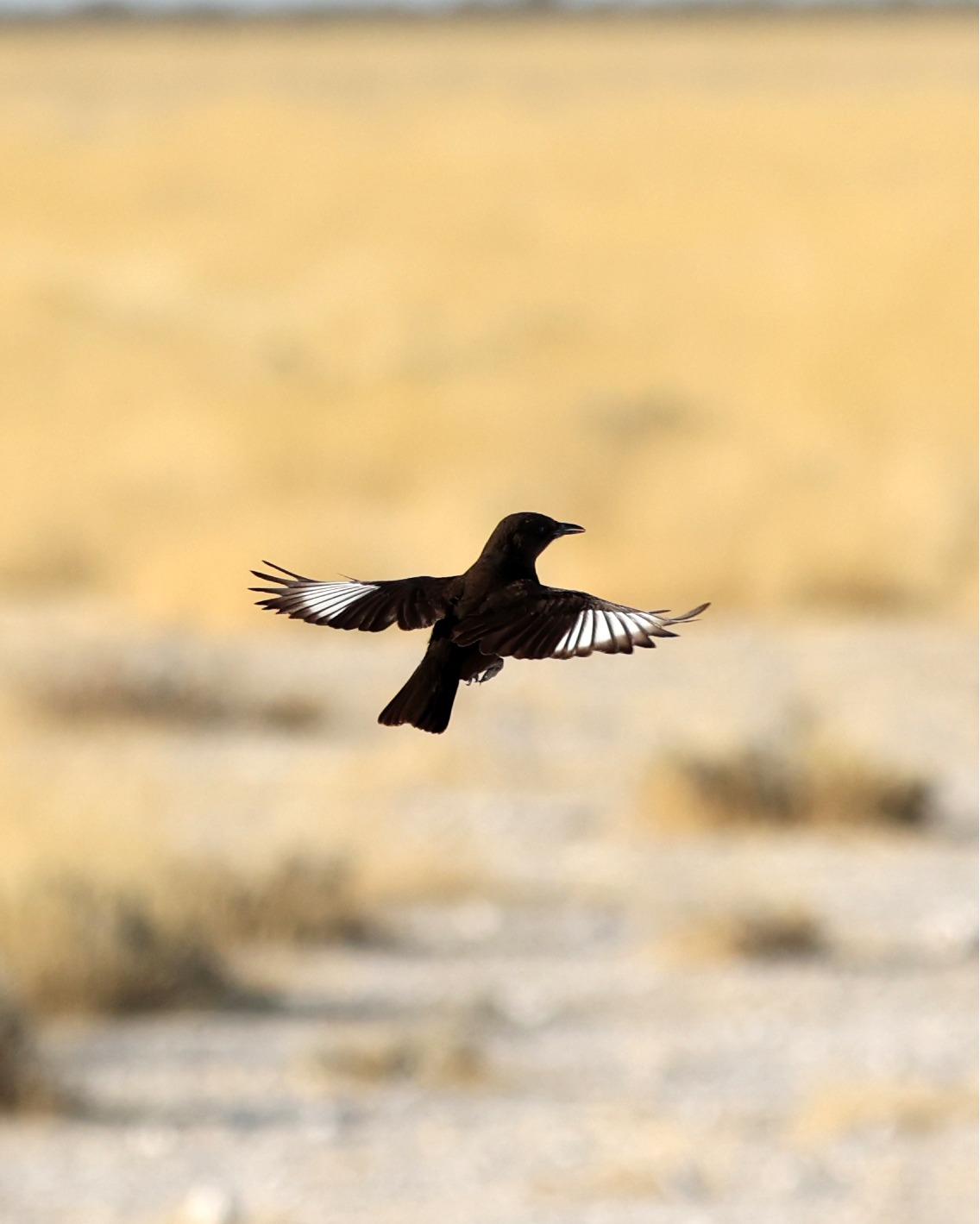
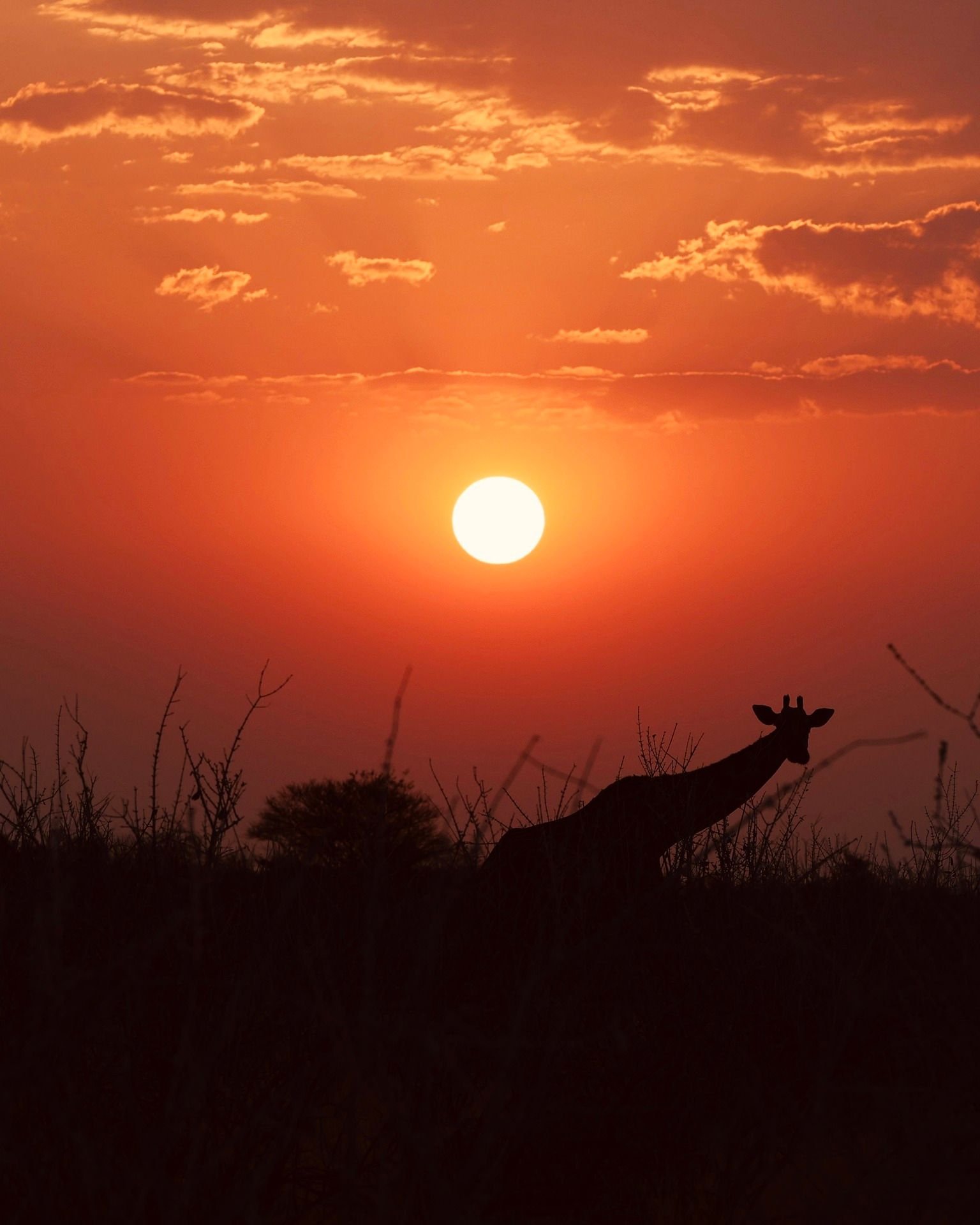
The main road follows the Southern edge of the Etosha pan, a massive expanse stretching hundreds of continuous kilometres. The landscapes of the park vary more than you would expect. Starting in the East around Namutoni camp and its historic fort, grassy plains and pans edged by camelthorns dominate the area. Denser acacia bushveld also occurs here, providing a home for species such as the near-endemic black-faced impala. Halali is situated next to rocky koppies, explaining why this is also the best place where you might encounter a leopard in the park. Okaukeujo is probably the most popular as a results of its beautiful waterhole. Its surroundings are the most sparsely vegetated in the park, reminding one of the expanses of the Karoo. The far Western area of the park is studded with beautiful granite outcrops and hills, providing a different ecosystem and in turn attracting different species of animals and birds.
Etosha is not for the faint-hearted. Like most arid parks, you have to put in the effort and cover vast distances between sightings. We averaged about 100 km per day, and most of the roads are pretty rough to downright horribly corrugated (our four broken roof rack support feet would tend to agree). A 4×4 isn’t strictly needed as in most other parks we have been in, and we even saw some VW Polos around, although I would hate to be the suspension on one of those. But if you spend the time, drive slowly, and sit patiently at the many dusty and rock-studded waterholes around, you might just get rewarded.
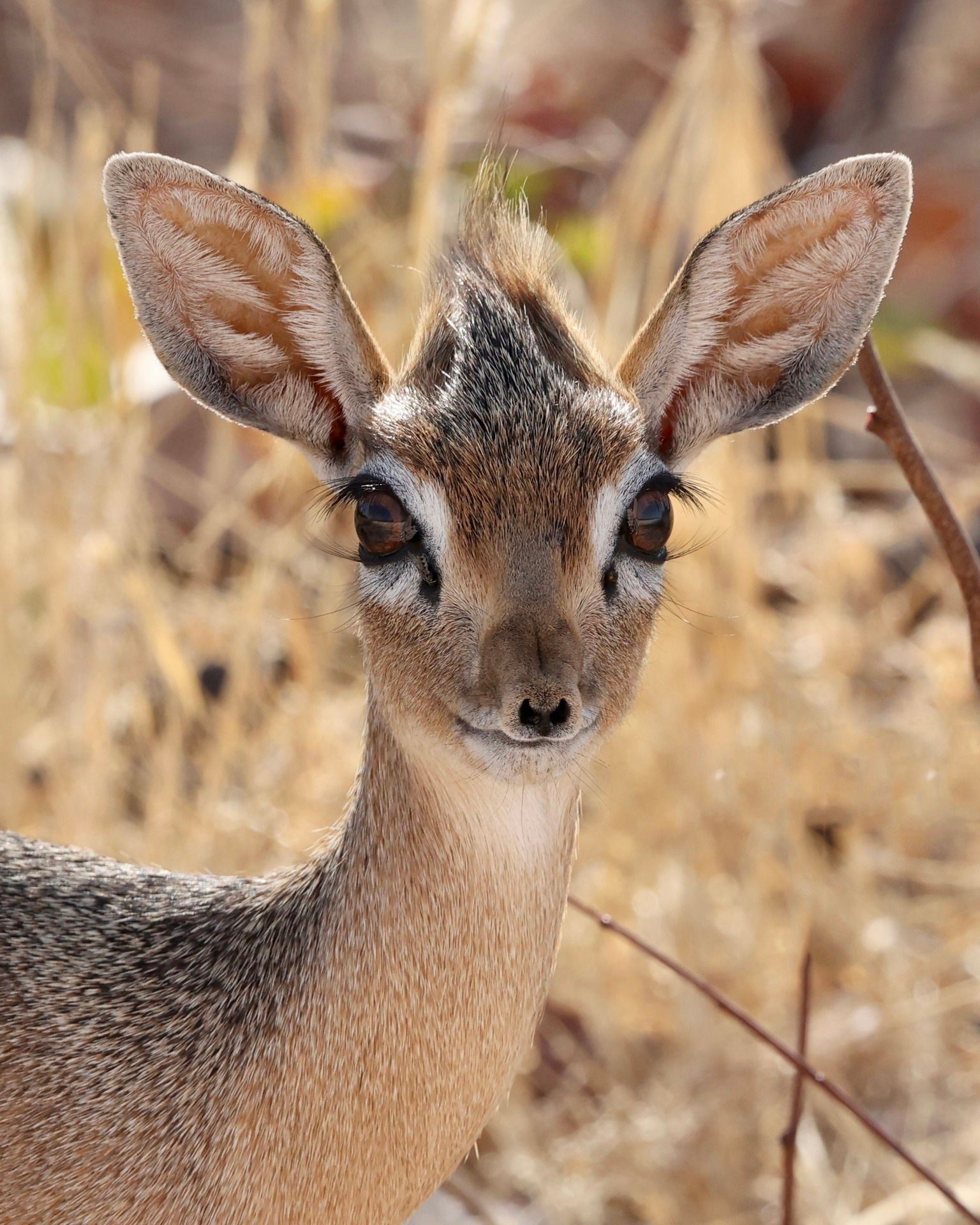
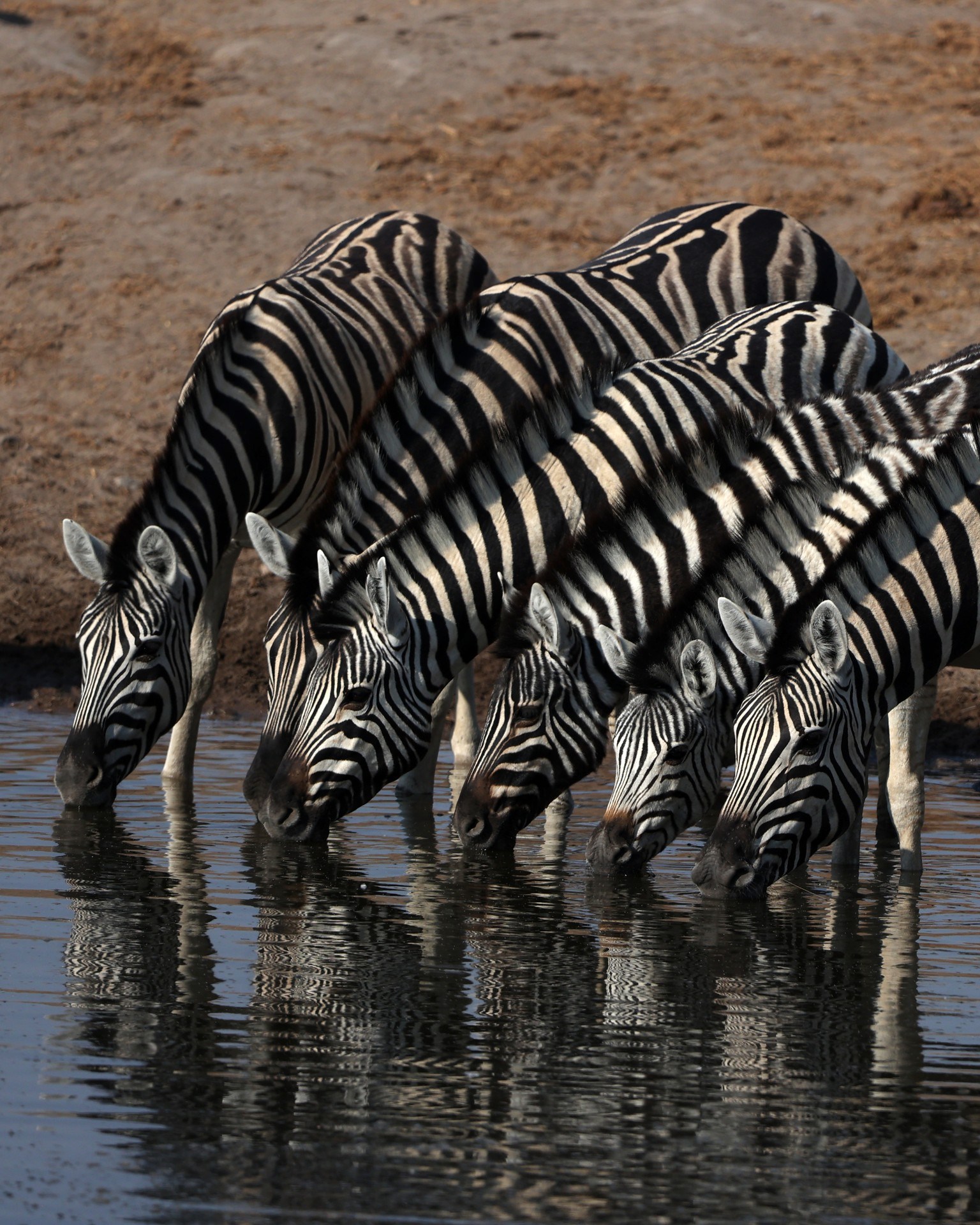
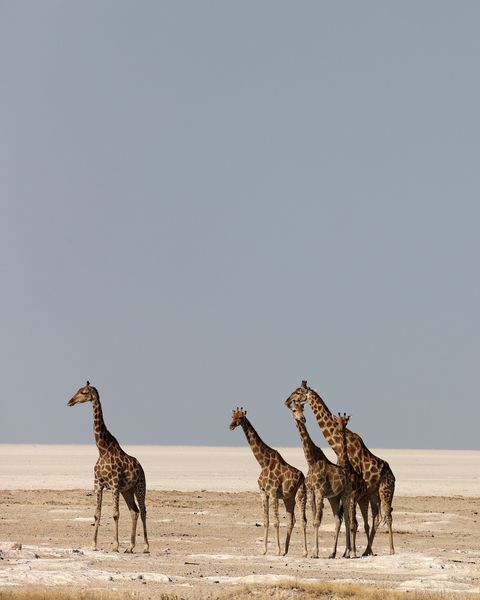
Some of the largest elephants in Africa, massive herds of springbok and zebra, journeys of up to twenty giraffes, rare Hartmann’s mountain zebra, and wide open landscapes as far as you can see are only some of the wonders we encountered. The park is also one of the very last strongholds of the endangered black rhino. It was a most rare privilege to have one inquisitively inspect our vehicle within touching distance, or to witness large socializing groups at night around the waterholes. We also came across a pair of Damara dik-diks, a cute little antelope with huge bulging eyes found only in Northern Namibia and South-western Angola.
Birding in this park is top notch. The pans held beautiful plains species such as the red-capped lark, chestnut-backed sparrow-lark, sabota lark and pink-billed lark. The waterholes revealed Kittlitz’s plover, common ringed plover and even a greater painted-snipe. Namibian specials such as bare-cheeked babbler and violet wood-hoopoe visited us for lunch in Halali camp. We marvelled at the sound of thousands of red-billed queleas drinking at Olifantsrus waterhole and witnessed a lightning-fast attack of two lanner falcons grabbing their daily lunch from the flock. In the Western reaches of the park a group of Ludwig’s bustards drank near Dolomite camp and a Monteiro’s hornbill rested in the shade of a mopani in the midday sun as we drove by.
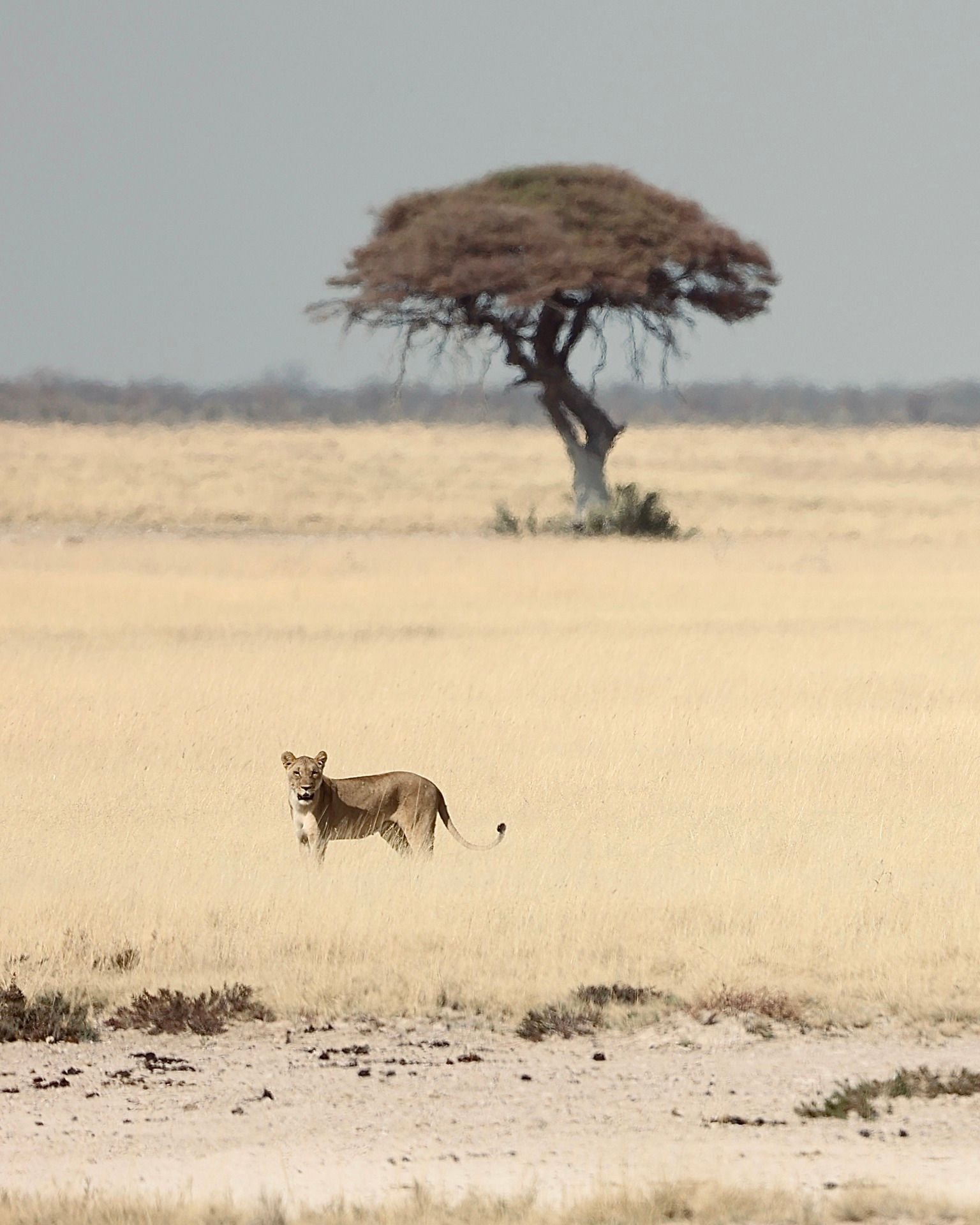
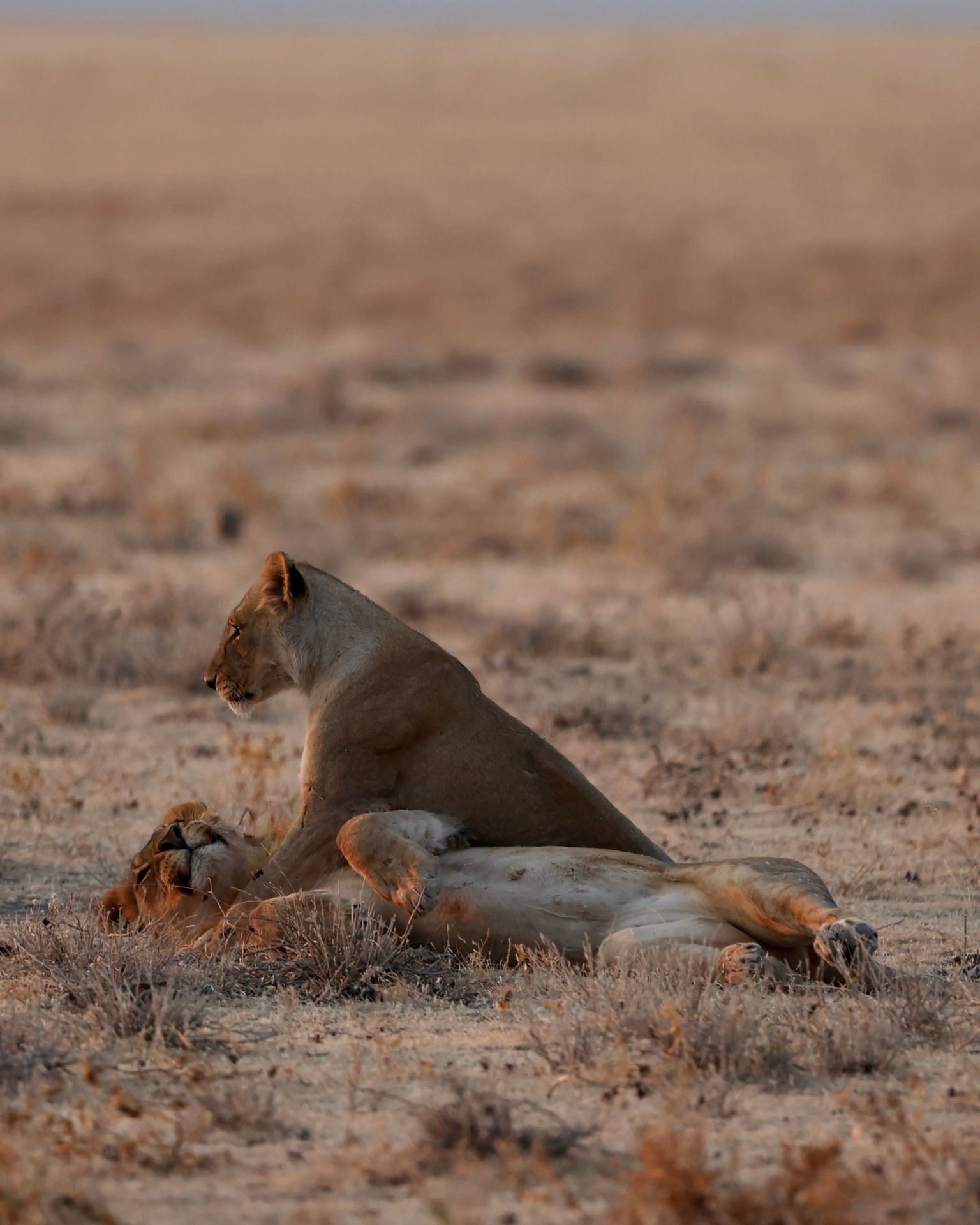
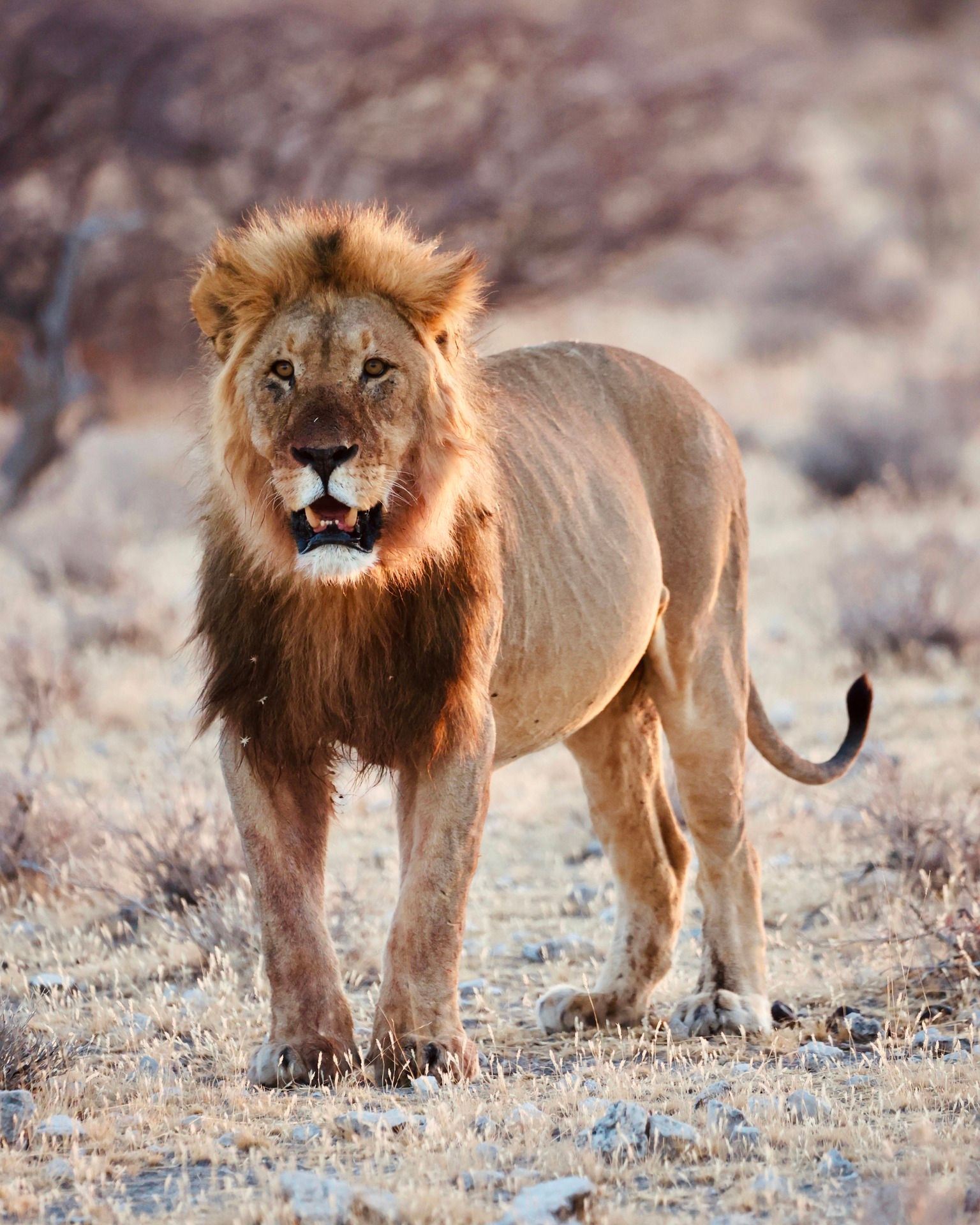
Now about those lions. For some reason, the universe made up in this trip for our general lack of lion sightings over the last few years. Not a single day went by that we were not lucky enough to see a few of these enigmatic cats. Most were in the vicinity of waterholes, as can be expected during the dry season. We witnessed various prides not only lyin’ around (pun intended), but also hunting, socializing, and we even saw a big male roaring from about ten metres away. Very few things in this life are as impressive as the sound pressure emanating from a male lion declaring his territory to all.
One does not come to Etosha for luxury camping or for pampered fine dining. At best the facilities can be described as quasi-spartan. But one does come to Etosha to witness Africa at its brutal best. To encounter desert-adapted animals used to the harsh realities of living in a ruthlessly arid place. To get your window-arm tanned, your forehead sweaty and your feet coated in and endless supply of fine Etosha dust. To learn something about the environment, your place in it and about this, the great white place.
